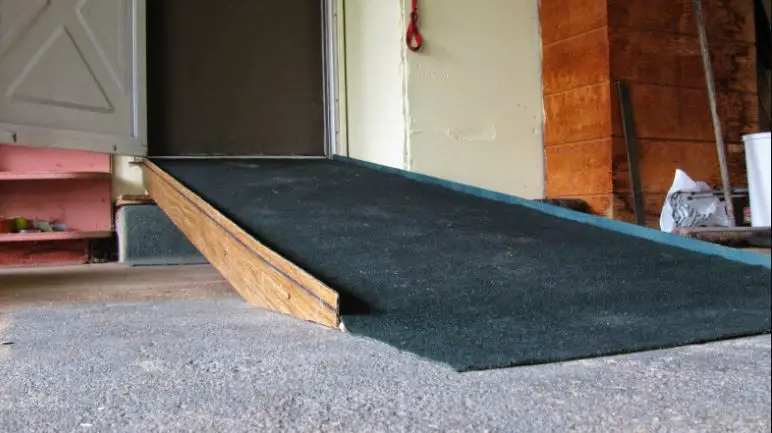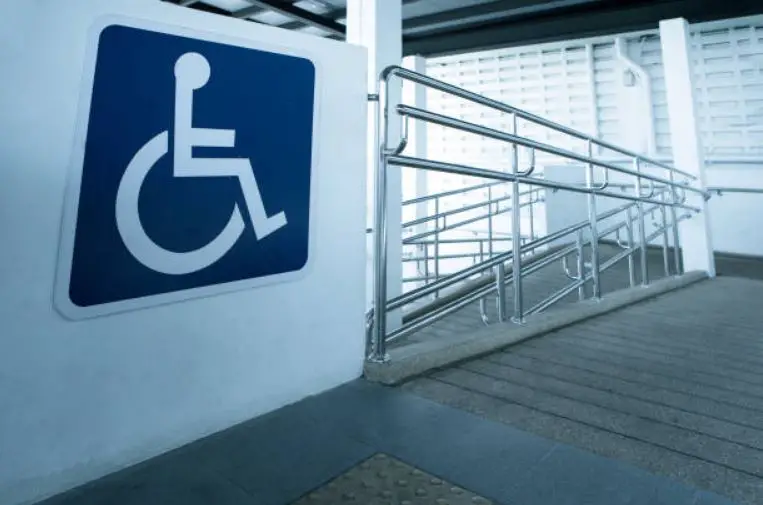This post may contains affiliate links.
This means I will make a commission at no extra cost to you should you click through and make a purchase.
A lot of wheelchair users still have trouble pumping their tires whenever it goes flat.
There have been so many questions on how to pump wheelchair tires, but if you give me just 5 minutes, I’ll show you the best way to pump flat wheelchair tires like a pro.
Most people don’t know how to pump their wheelchair tires and still don’t understand the concept because they don’t know which pump is best for their wheelchair.
Some don’t even know how to even replace a wheelchair tire when they need to.
You need to understand that tires used in wheelchairs are different from the ones used in bicycles. So I don’t expect anyone to treat their wheelchairs the same way they would treat their bikes.
The good news is that pumping and replacing wheelchair tires are a lot easier than replacing bicycle tires. You can even pump your wheelchair tires yourself as a wheelchair user or a partner without stress.
In this article, we will give you a complete step-by-step guide on how to pump the tires of your wheelchair like a pro, even if you’ve never done it before.
We will also take our time to answer some of the most common questions asked by people who want their wheelchair tires fixed.
We will also walk you through some of the different wheelchair tires available, how to replace a damaged wheelchair tire, and how you can inflate the tires of your wheelchair when the need arises.
RELATED:
How To Get A Wheelchair For Free
How To Get A Wheelchair On Medicare In 2024
How to Choose The Right Footrest For Your Wheelchair
How To Pump Wheelchair Tyres
Pumping the tire of your wheelchair is super easy; you don’t need any special skill or expensive equipment to pump the tires of your wheelchair.
Sadly, most people go around the wrong ways to inflate their wheelchair tires, making the process harder and more frustrating than it already is.
If you are a wheelchair user and you don’t know how to inflate a flat wheelchair tire, your problems are problems bigger than your ego and you’re not as independent as you thought.
To pump the tube of a flat wheel, you’ll need a Schrader, pressure gauge, and a hand or foot pump. The Schrader also called the American valve is one of the most important tools for pumping the tires of a flat wheelchair tire.
Since it is a very popular tool, it won’t be hard to find one. You can even purchase a quality valve for as low as $10 on Amazon. The Schrader valve is a type of pneumatic tire valve used on virtually every motor vehicle on earth. It comprises a valve stem that is attached to a threaded valve core.
The valve core is a poppet valve assisted by a spring with a small rubber seal that prevents the fluid from escaping through the threads.

Once you have a Schrader valve, you should also get a hand or foot pump. Most wheelchair pumps are similar to those used to pump bicycle and motorcycle tires.
Attach the end of your Schrader valve to the end of the handheld inflators and insert the tip of the Schrader valve into the inner tire valve.
Once attached to the inner tube valve, you should start inflating the tire using the handheld pump. Make sure you have a pressure gauge on the pump; else you’d ruin the tire.
If you over-pump the tires, the pressure in the tube will be too much and cause the tube to burst.
If the pressure in the tires is too low, it will not support your weight and increase wear and tire.
So make sure that you have a pressure gauge until the number on the meter matches the tire manufacturer’s recommendation.
When the number on the gauge reaches the one recommended by the manufacturer, but the valve caps back on the inner tube valves, and voila you’re done.
See, easy as pie. If you like this guide, you should also check out our guide on how to paint a wheelchair like a pro. It is the ultimate DIY guide for wheelchair users looking to redesign their wheelchairs.
If the tire was torn by a sharp object, it would have to be replaced.
Wheelchair tire sizes are self-explanatory; the size of the tire is normally etched on the wheel that allows the users to find a replacement when the old one has worn out.
The most common diameter of a manual wheelchair’s rear tire is either 22, 24, or 26 inches for adults. Most manual wheelchairs come with a 24×1 3/8″ tire.
While diameter and sizes for power wheelchairs are smaller since they are more hardened than those on a manual wheelchair.
If you buy the wrong tire size, it won’t fit into your wheelchair.
Best Wheelchair Tyre Pumps
Now that we’ve seen how to pump wheelchair tires like a pro, let’s take out some time to look at some of the best wheelchair tire inflators.
It’s best to have tire pumps: one for home and one in your car in case of an emergency.
If you are new to pumping wheelchair tires or have no idea about the best tire pumpers for wheelchairs, no worries, we’ve got your back. These are some of the best wheelchair tire inflators of 2024.
The BV Bicycle Ergonomic Tire Floor Pump is one of the most popular wheelchair tire pumps in the USA. It has a large base, firm pumping handle, 4 ft host with 360 degrees pivot, and 160 psi with lockable twin-valve pumping feature.
The newly designed valve head can easily switch between Presta and Schrader valves and without any air leaks.
What made this tool our top pick was the fact that it is real handy and can inflate almost everything from basketballs, pool floats, bouncing castles, and even car tires. It is a very handy tool for all wheelchair users.
The Vibrelli mini tire pump is a really handy tool for repairing and inflating punctured wheelchair tires. Our goal is to present you with a high-quality wheelchair tire pump, that will help you take care of your friend on wheels.
Durably constructed, this pump is capable of reaching up to 160PSI. Armed with this useful tool, you can attend to punctures on your wheelchair rim. It automatically switches back and forth between Presta and Schrader valves – A feature that lets you inflate both car, wheelchair, scooter, or bike tires.
It also comes with a glueless puncture kit, saving you time and effort for restoring the tube’s pressure. Thus, enjoy some peace of mind knowing that your wheelchair will be always ready.
I sincerely think this is one of the best compact wheelchair tire pumps on Amazon. Even though it is just less than 25 inches long and weighs less than 3lbs and has an air pressure pumping capability of up to about 160 psi.
Speaking of portability, The Topeak Road Morph G Tire Pump is another reliable tire pump that is compatible with both Schrader and Presta valves. This reliable tool Inflates up to 120 PSI, and the gauge at the foot of the pump lets you when it’s time to stop inflating.
This little pump can inflate both high-pressure road tires and low-pressure mountain bike tires with ease. The Morph G handle is easy to attach, even to a Presta valve without removing the valve core. The fold-out foot pad puts you in an efficient pumping position, assisting you to quickly reach optimal tire pressure.
The best thing about this tire pump is that it weighs just 220 Grams and is super portable. So, You can attach it to your wheelchair in case of an emergency. This makes the Topeak Road Morph G Mini Pump the perfect tool when you encounter flat tires on your way out.
The Pro Bike Tool Tire Pump device is not just for pumping wheelchair tires, it is the perfect tool if you have a lot of inflatable items in your home. It supports both Presta and Schrader valves and has an integrated pressure-relief button to reduce excess pressure.
This iconic tool also has a pressure gauge that allows you to inflate your wheelchair tires accurately to prevent wear, prevent overfilling, wear, and tear. Carry this lightweight, compact bicycle pump where you need it most. It’s portable and easy to use — great for wheelchair users, bicyclists, walkers, and other athletes on the go. The PRO Bike Pump includes a free mount kit designed to fit all sizes and styles of handlebars and seat posts.
What makes this pump stand out from the rest was the fact that it has a 0 – 160 psi (0 – 11atm) range makes it ideal for wheelchairs, MTB, and Road Tires with any pressure requirements.
The AerGun X-1000 Tire Pump is one of the best wheelchair tire inflators on earth. It even has a built-in pressure gauge that supports both Presta and Schrader valves.
This way, you don’t have to do anything too technical when pumping your wheelchair tire, just insert the inflator into your wheelchair’s inner tube valve and start inflating. AerGun X-1000 Bike Pump is a functional and highly durable bike pump. It features an airtight pump head for Presta and Schrader pumps in one, a built-in pressure gauge for precise pressure setting, 160PSI maximum pressure producing capabilities, and a flexible hose that protects from bending.
The pressure gauge automatically shows air pressure and the pump head is super air-tight and allows you to pump your tires faster with a lesser number of strokes which makes it perfect for pumping wheelchair tires.
Can Duct Tape Be Used To Patch A Torn Wheelchair Tire?
Yes, you can use duct tape be used to patch a torn wheelchair tire. I have tried it four times and duct tapes do a very fine job in patching a torn wheelchair inner tube.
Duct tape is a short-term solution because the duct tape won’t be able to contain the weight and pressure in that area. It can only seal the hole for 5 days at most.
What Should Be My Wheelchair Tire Pressure After Pumping?
There’s no fixed figure on the air pressure of your wheelchair tire after pumping. Each tire has its own recommended pressure in PSI or Bar engraved on the side of the wheel.
However, Air-filled wheelchair tires (or pneumatic tires) can contain pressures between 100 to 145 PSI and 6.8 to 10 Bar and still give you a more comfortable ride, even on bumpy pathways.
What Is The Standard PSI For wheelchair Tyres?
The standard PSI for wheelchair tires is between 100 and 130 PSI. This value will vary depending on your wheelchair model. Always check with the tire manufacturer to see what the recommended pressure is.
Should I Replace Flat Wheelchair Tires?
Some wheelchair tires need to be replaced once they are damaged. Most wheelchair tires, particularly solid and pneumatic puncture-proof tires, would have to be replaced once they are damaged.
Can I Pump my Wheelchair Tires Myself?
Of course yes! Pumping a wheelchair tire is something that you can do yourself, even if you are disabled. However, to get the best result, it is better to have someone that is experienced to show you the ropes before you attempt to fix the wheels of your wheelchair.
What Is the Best Pump for Wheelchair Tire?
There are so many wheelchair pumps to choose from, especially when you walk into a store or website. We have reviewed some of the best wheelchair tire pumps available on Amazon.
We are 100% sure that and of the pumps we listed above will do a fine job in inflating wheelchair flat tires. We’ve tried all of them and they all work perfectly.
Put if you are a pro looking for a handy wheelchair pump, we recommend that you go for this portable mini pump for cars, bikes, and wheelchairs. It does a really fine job when it comes to inflating a flat wheelchair tire.
How Do You Pump Up A Wheelchair Tire?
The first step is to loosen the tire pressure valve on the wheelchair. Then, using your hands or a tire pump, send air into the inner tube until it’s firm, but not so tight that you flatten the tube.
Types Of Wheelchair Tires

Before we walk you through the complete process to inflate your wheelchair tires, you need to first understand the types of wheelchair tires on the market. Like I said earlier, wheelchairs and bicycles are two different machines and should not be treated the same way.
Wheelchairs are more sophisticated than most conventional bikes. Without strolling too far from the subject, you need to understand that there are three types of wheelchair tires: Pneumatic wheelchair tires, solid wheelchair tires, and pneumatic puncture-proof tires.
Just for the sake of emphasis, let me give you a rundown of the three types of wheelchair tires so you understand them better.
1. Solid Wheelchair Tires

Solid wheelchair tires are one of the most popular types of tires used by wheelchair manufacturers. It is usually made of rubber and sometimes it has a plastic shell.
What makes these popular among wheelchair manufacturers is the fact that it is cost-effective. These types of wheelchair tires cannot be punctured by sharp objects or deflated by the user. It makes it more durable and requires significantly less maintenance than other conventional tires.
However, these types of tires were made for indoor use. This means that would give you limited movement if you are going somewhere with grass or sand flooring like the park.
Since the inner tubes of solid wheelchair tires are not inflated with air, they are less flexible and would make rides on some surfaces uncomfortable. The good news is that this tire doesn’t deflate. If yours is broken, you’d have to get a new one to replace it.
2. Pneumatic Wheelchair Tires

This is probably the flat tire on your wheelchair right now. If I am correct, this means that there should be somewhere leaking along the rim of the wheelchair or the tube.
Pneumatic wheelchair tires also known as air tires are the common air-filled tires that are found on the larger wheels of self-propelled and electric wheelchairs.
Since these types of tires have air tubes filled with air, they are more susceptible to puncture, can be deflated, and even lose air pressure.
To keep your tires from constantly getting deflated, you should check your tire air pressure regularly and maintain equal pressure on each tire to prevent one tire from doing all the work and giving out.
Don’t be annoyed, we will soon give you a full guide on how to pump wheelchair tires. But before you get there, stick with us.
Since these types of tires are filled with air, they provide a more comfortable ride compared to solid tires on both indoor and outdoor terrain.
These air-filled tires have deeper treads and allow the user to enjoy more stability and comfort thanks to their increased grip. Since it is lightweight, it can easily be in the back seat of a compact car.
3. Pneumatic Puncture-proof Wheelchair Tires

Just like the standard pneumatic wheelchair tire, Pneumatic puncture-proof tires have inner tubes filled with air, but these tunes are more durable since they are made of puncture-resistant Kevlar.
Also called foam-filled or flat-free inserts, these types of wheelchair tires are way better than the standard pneumatic wheelchair tires.
Pneumatic puncture-proof wheelchair tires don’t require too much maintenance since they are almost damage resistant and have a durable semi-solid core.
If this is the tire on your wheelchair, it will have to be replaced once it is damaged.
The sad fact is that its complex design and quality make it more expensive than most conventional pneumatic wheelchair tires.
The Kevlar used to make these tires are also very heavy, this may make most wheelchairs that have pneumatic puncture-proof tires difficult to fit into the trunk of a small car.
In conclusion, pumping a flat wheelchair tire is a simple exercise that can be done by anyone even paraplegics as long as they have the right instruments. We are sure that you know everything you need to know if you plan to inflate a flat tire on your wheelchair.
We hope this article is helpful and answered your question on how to pump wheelchair tires. If you have questions, you can drop them in the comment section and we will give you a candid response once we receive it.

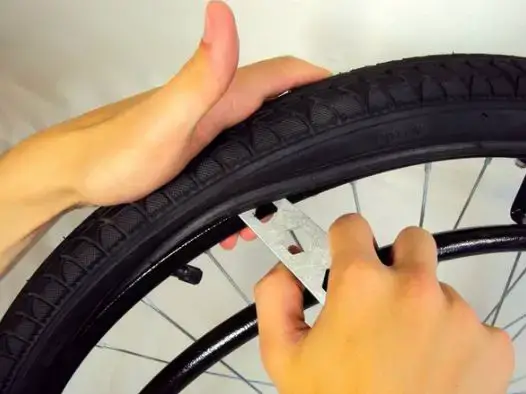
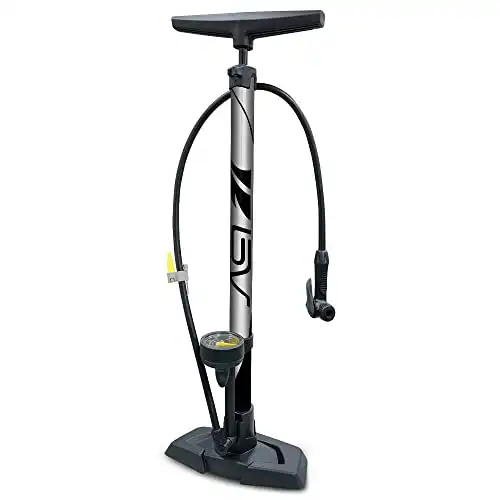
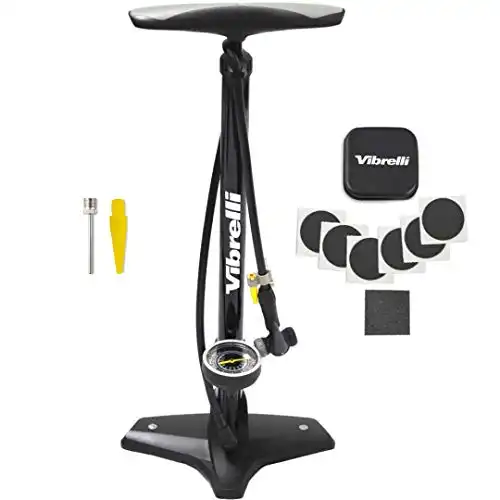
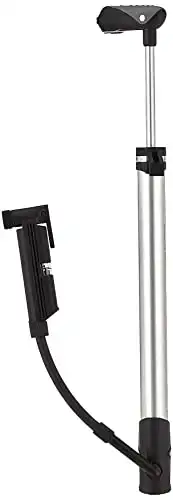
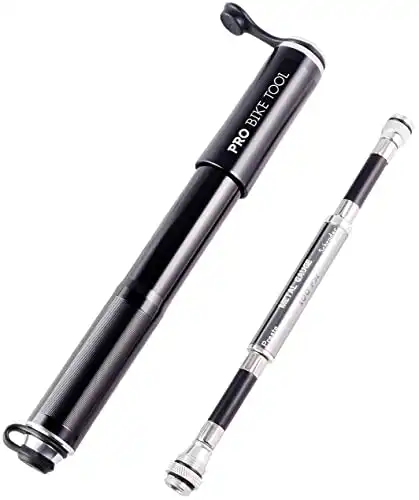
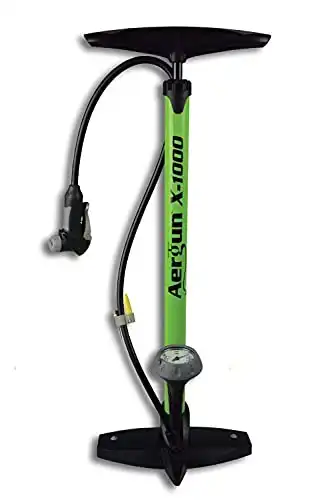




![Best Wheelchair Tires For Outdoor Use [2024 Review] Best Outdoor Wheelchair Tires](https://wheelchaired.com/images/Best-Outdoor-Wheelchair-Tires-250x200.jpg)
